Whenever one hears of Coomacka, that small community up the Demerara River in Region 10, immediately one associates it with bauxite mining. In fact it is commonly called Coomacka Mines or simply The Mines.
The Mines were and still are a name associated also with adjoining communities, namely, Maria Elizabeth aka Three Friends, Old England and Siberia, all of which are closely knit but each of which has its own identity.
Coomacka had humble beginnings in bauxite mining operations. It was one of several communities that came into existence from the first days of bauxite in Region 10, initially under Demba and later under Guymine, Linmine and Omai Bauxite Mining Inc. Bauxite mining for Coomacka came to an end under Linmine, and for the community, the last association with its origins was the presence of the machine workshops. As the Government of Guyana embarked on a process of privatisation, Coomacka was stripped of all activities associated with bauxite save and except for its use as a route into the new mines now owned and operated by the Chinese Bosai Group Guyana Inc.
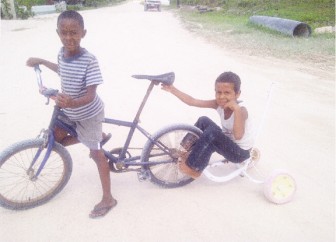
With the exodus of bauxite, the community was left on its own to chart its course. They did see the birth of two logging industries, Bai-Shan-Lin and Sunshine Timbers, both of which provided very limited avenues of employment for residents. A leather products manufacturing company, Arawak Leather Craft, was another economic venture that sprang up in the area but was quickly closed as a consequence of various challenges.
“We got to do whatever it takes for ourselves if this place is to move from one stage to another,” said Bernadette Jones, as she sat among a group of residents, mainly women. They were at the time launching their Coomacka Community Market Day. There were approximately four tents being help-up by small collapsible wooden-framed stalls. On sale were mainly farm produce, handicraft, home-cooked chicken food, souse and on-the-spot fried fish and potato chips.
“We are establishing a fortnightly market day here where residents can come and shop instead of having to go all the way to Linden,” explained Community Health Worker Floris.
Coomacka is approximately fifteen miles away from the business centre of Linden. While it has one variety store and a few small shops, it is heavily dependent on the general services of the town. However, it has its own primary and nursery school and a community health post.

There is, however, a 24-hour electricity supply which is linked to the Mackenzie-Linden grid. Its means of communication is very limited with weak mobile signals from the two networks, GT&T and Digicel. “The worst thing here is that from the beginning of time we have never had potable water supply,” said Jones, who was echoed by several other residents noting that they had made repeated calls to the government to establish a potable water supply system.
“For all the years is the raw river water we have been using in this place.” said 54-year-old resident Mary Savory. She added that during the dry season water for domestic use becomes a major challenge. “In some parts people would get drinking water from springs; very few people can afford to buy water and some people use the river for everything, everything.”
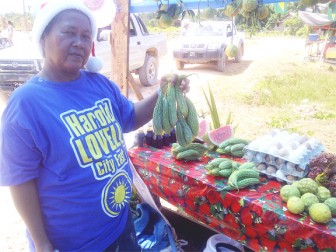
Most of the families in Coomacka are of mixed ethnicity with deep roots in St Lucia.
“Long ago Demba use to bring a lot of the Islanders to work here and is so this place starts growing. Deh Islanders marry or had children with the couple Guyanese and so we mix-up here,” Jones said jokingly.
Transportation remains a challenge. In the early days there was the workers’ train that transported residents along the train lines which existed mainly for the shuttling of bauxite ore wagons pulled by locomotives. There were no roads at first, but as time went on road transport was introduced. The Demerara River which runs along the length of Coomacka continues to be a widely used mode of getting into and out of the community.
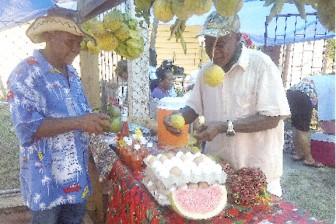
“We have one and two buses that does run, but they move with a schedule so you can’t just pick up at any old time and seh yuh going to Linden,” explained a resident. “You got to wait for certain time when yuh know dem bus gon run or you better get your own wheels.” The resident who opted not to be named said that children attending school in Linden faced great hardship if their parents could not afford the transportation costs. “Some of dem does walk deh distance and some of dem does ride,” he said.
Most residents’ existence depends heavily on logging and farming. “It bothers me to see some of we most intelligent youths just lefing school and deh on dem farms,” complained an elderly woman; “Is all sorts of things deh farming and doing and you know what I talking about.”
Social activities for youths are rare. While there is a community ground and centre there is urgent need for their development. The ground becomes easily waterlogged and the centre is in urgent need of rehabilitation. “We have a lot of book in there which we would be glad to get as a library,” said Jones.
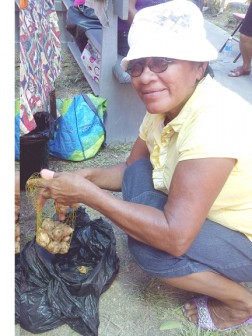
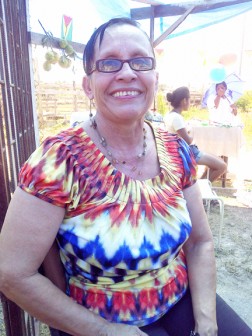
The Jones family is one of the largest and most popular in Coomacka. Bernadette said she was born in Coomacka, and in 1998 she became the first community health worker, advancing to the position of trained midwife in 2009. “There are just three of us working presently at the health centre in addition to a SIMAP trainee,” she said.
With a population of approximately 150 households the health team sees in excess of thirty infants on a monthly basis and approximately twenty-five to thirty persons at

family planning, chronic illnesses, ante-natal and outpatient clinics. A medex would make periodic visits to the community while residents look forward to medical outreaches by the Ministry of Health and overseas based organisations. “We used to get at least two overseas medical outreach programmes every year, now it’s been a while and we would be very glad to have them coming again,” said the midwife.
To fuel economic activity and bring residents closer to each other they introduced a market day. This was the initiative of the Women’s Progressive Organisation (WPO) in collaboration with other groups in the community. “Women do lots of different things here and they ain’t getting no sales for these thing,” said Floris. She said that the idea of a market day was long a dream of the WPO which has finally got the blessing of other groups.
“There was some talk that it’s a political thing, but it’s not true; all we want is for this place to develop and start being a more recognized community,” Floris said. Their ultimate goal is to have an established market tarmac complete with covered stalls.
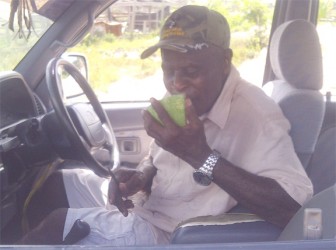
The other noticeable development in Coomacka is the erection of a police outpost which is not yet completed. According to a resident, this will answer a long painful cry of the community. “We had such bad experiences in here with crimes, robberies, murders, all left unsolved all because we have no police presence,” said a businesswoman in the area. As she recalled painful personal experiences as well as those of others, she expressed heartfelt gratitude to the Linden Station Management Committee (LSMC). With input from Bosai the outpost is 60% complete. In addition the committee, with the involvement of members and corporate entities is erecting a community bus shed and will prepare a stretch of land for the construction of a basketball court.
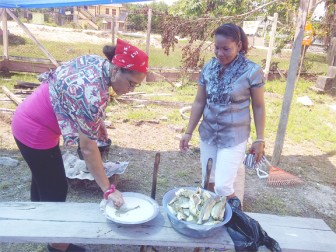
Coomacka Market Day
They also have a desire to have one of their main access roads paved or developed. “This old train-line road is the main [road] and you can safely say the only road that is directly in the community, and we would love if they can do something to improve it,” said a youth. This would encourage a more regular flow of public transportation, she said.
Many residents expressed the view that Coomacka would be a beautiful tourist destination. They recalled the glory days of regattas on the white sandy beaches which were maintained along the east bank of Demerara River. “We really need those activities back in here. All we need is to do a little dredging of certain parts of
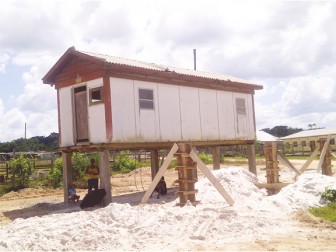
the river, repair a beach or two and you would see how people would flock this place like back in the days,” one resident said.
They said persons would come from all parts of Guyana, the wider Caribbean and further afield to tour their community. “People are attracted to the white sand and overburden hills,.” said Floris.
“They also come to take picture, shoot videos and all sort of things at the mined out areas around Coomacka.” she added.
Traditionally the community holds a Coomacka Village Day as well as at least two other major entertainment events annually. There is a pool hall, more than one night club and a few bars in the community.








